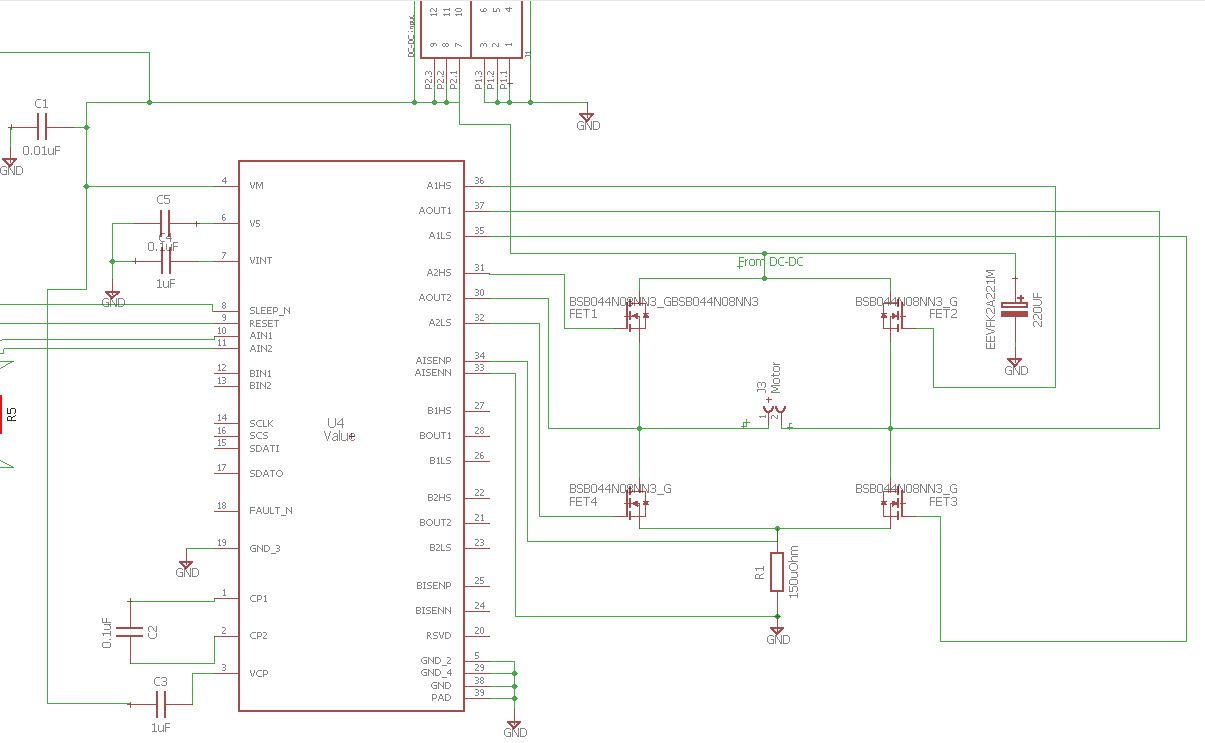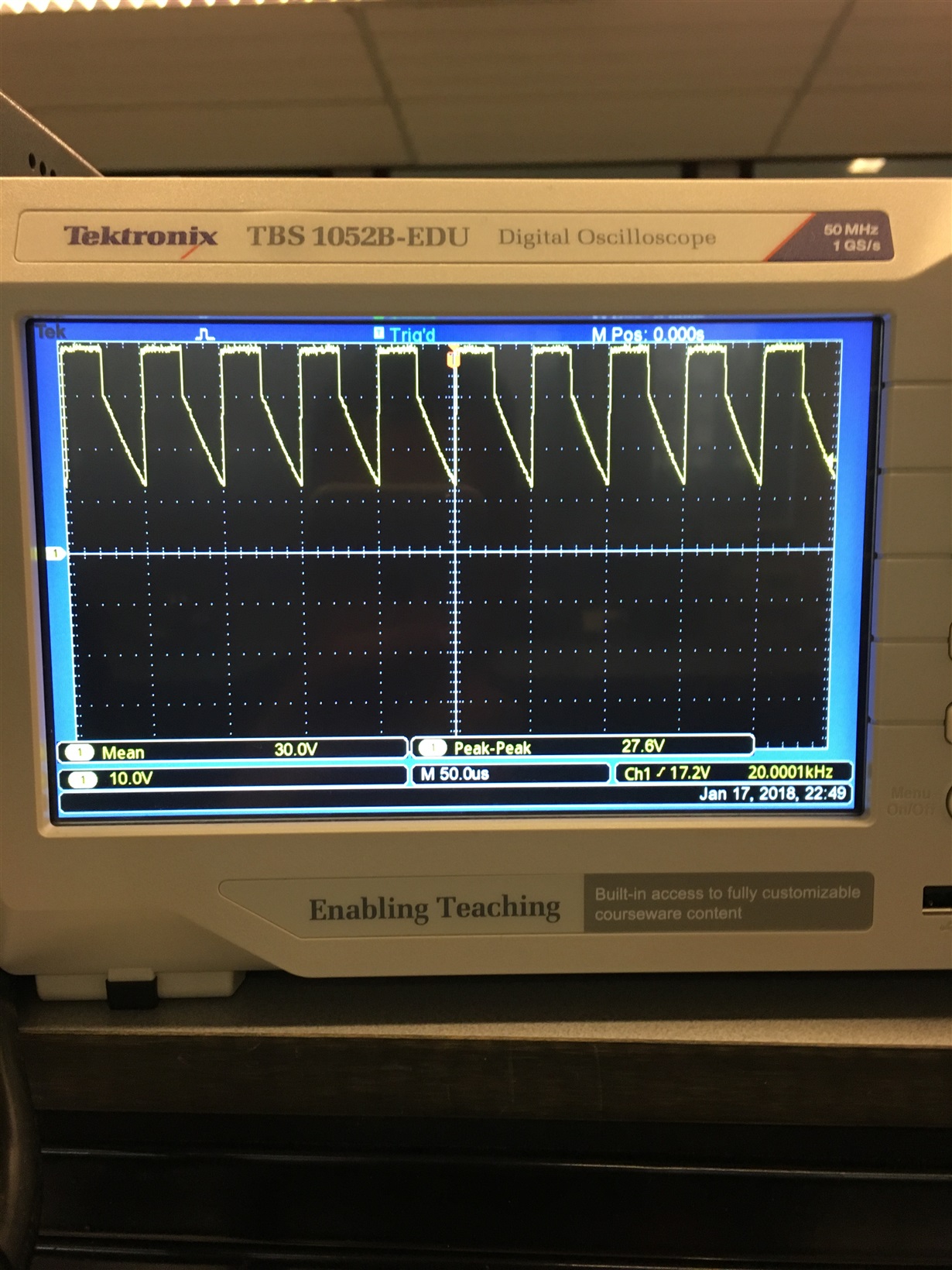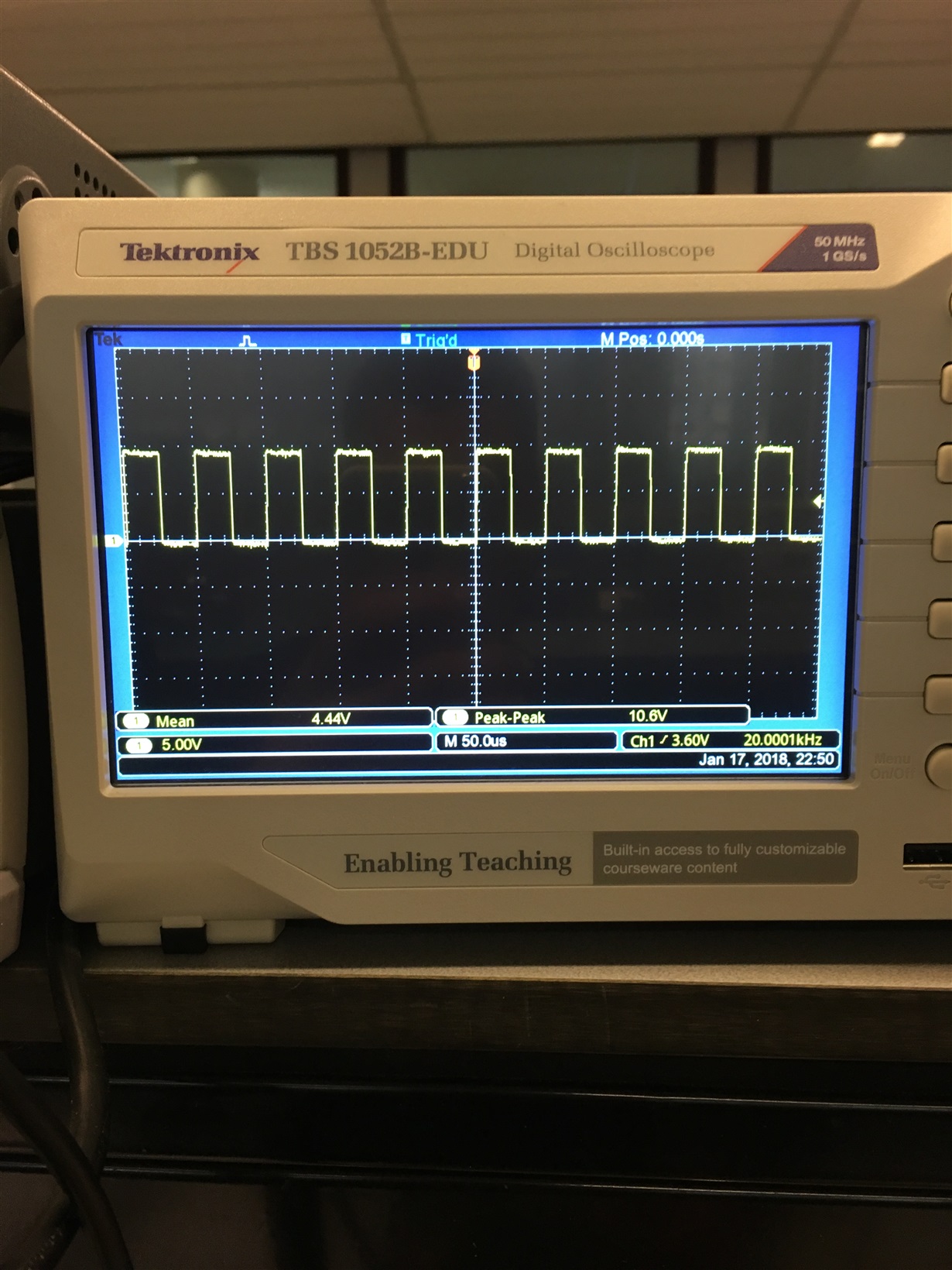Other Parts Discussed in Thread: DRV8711EVM
Hi there,
I am working on a project for a motor driver. Currently i am stuck at the point where I can not get an (correct) output signal.
The driver is used to switch on a H-bridge where i have used BSB044N08NN3G Mosfets from Infineon.
What are my inputs:
- 48V at VM (Testing at 12V and 25V)
- +5V on the sleep to activate the driver
- 10kHz PWM with max amplitude of 5V.
I am only using one motor (A-input/Output)
I am trying to get the driver working on direct PWM (No SPI).
I have now connected my driver on the VM at 25V and got the driver out of sleep, i can now see that the driver is pulling approx 10mA. So that should be good.
The V5 pin sends out a +5V signal, so i could not imagine that the driver could be faulty..
Now connecting a PWM signal on the AIN1 pin, i would be expecting an signal on two Mosfet gates (A1HS & A2LS or A1LS & A2HS). I do get an signal which is about 900mV (instead of the expected 25V), but that seems to be also my output signal on AOUT1 and AOUT2. (Note that i have a resistor of 1K as load connected). I have measured the connection between the gate and the source/drain of the Mosfets, but there is no connection between them.
I have tried to give a 100% PWM on AIN2 in addition to the PWM signal which is connected on the AIN1 but still no succes.
Is there anything i could try or missed ?
Thanks in advance and if there are any questions i would be happy to answer them.
Best regards,




